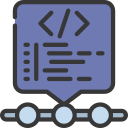Avoiding Pitfalls: Quality, Security, and Maintainability
Adopt environments for dev, staging, and production, with snapshots and rollbacks. Use test data, scripted flows, and visual diff tools where available. Document release notes and ownership. Share your current workflow, and we’ll recommend lightweight rituals to ensure reliability without slowing you down.
Avoiding Pitfalls: Quality, Security, and Maintainability
Implement least-privilege roles, field-level permissions, and encrypted secrets. Map data residency requirements and retention rules. Audit who can publish and who can approve changes. If compliance worries you, comment with your region and industry, and we’ll point you to relevant controls to implement first.
Avoiding Pitfalls: Quality, Security, and Maintainability
Design for scale with pagination, caching, and selective queries. Track usage limits and plan for export paths or hybrid architectures to avoid lock-in. Many platforms support code escapes when needed. Tell us your scale targets, and we’ll outline a pragmatic mitigation plan that keeps optionality alive.





